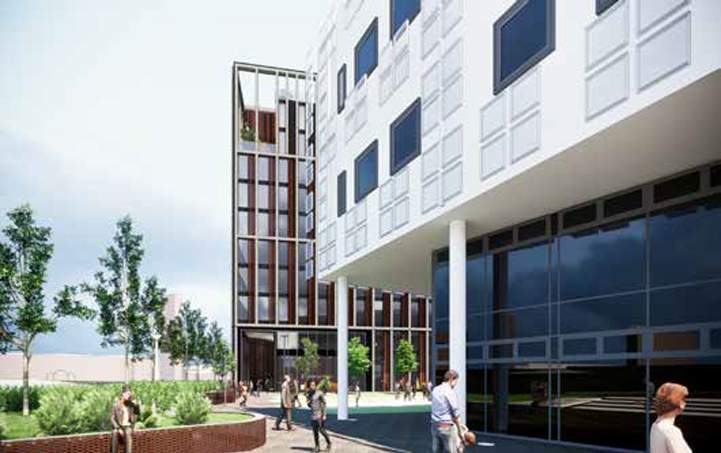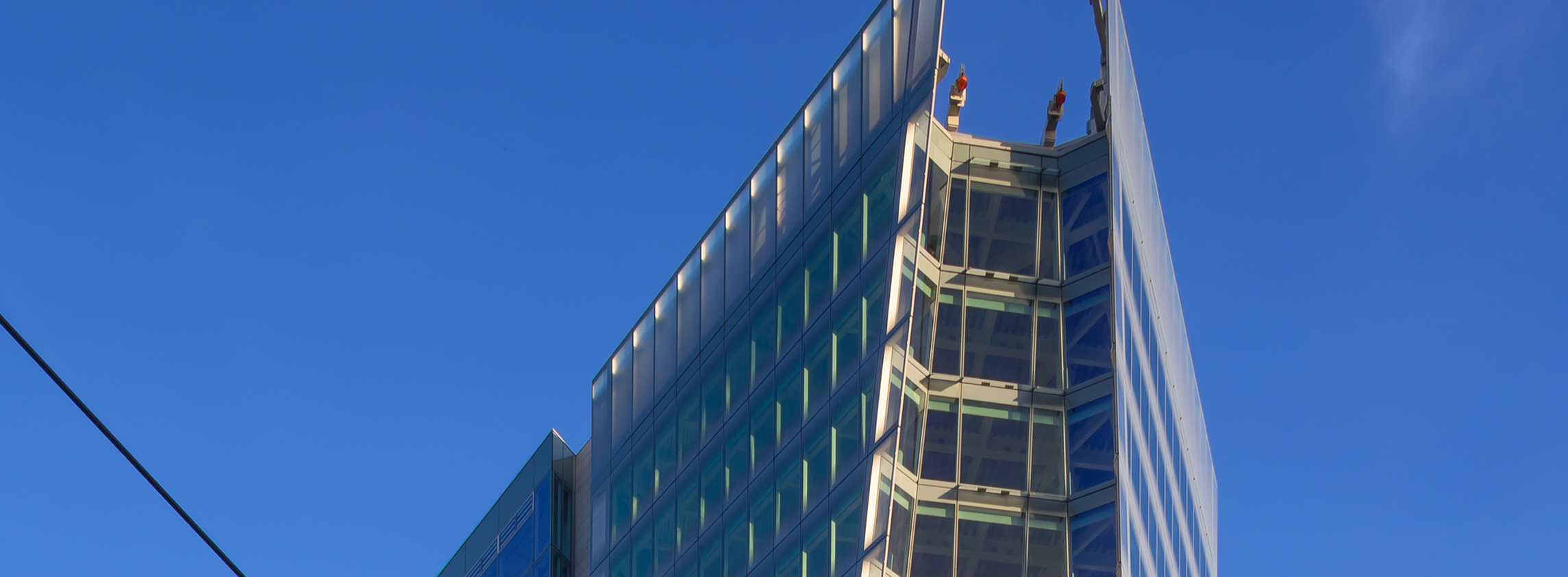Grade A supply has fallen by 53% since the end of 2019
Occupational overview
- The Birmingham office market had an incredible start to the year, with BT committing to take 283,000 sq ft at Three Snowhill. Although first-half take-up was 22% down on the same period last year, it was 20% up on the H1 10-year average.
- During the first half of 2020, take-up in Birmingham reached 400,459 sq ft, 363,358 sq ft of this was considered to meet Grade A standards (91%).
- Unsurprisingly, with the BT letting in the first quarter, the Technology, Media and Telecommunications (TMT)sector, accounted for 74% of take-up in the first half of the year.
- At the end of Q2 2020, total availability in Birmingham city centre sat at 1.8 million sq ft, having reduced by 18% since the end of 2019. Prime Grade A supply has fallen by 53% since the end of 2019, and now sits at just 285,000 sq ft. This equates to enough supply to meet the demand for just 0.7 years of average Grade A take-up. Anything less than two years is classed as an undersupply. This is the lowest level of supply of Grade A space on record.
- As we start to enter a ‘new normal’, occupiers will factor flexible working into their office requirements as many employees find they can work remotely for at least part of their time. This may result, in some cases, in a reduction in the amount of operational desk space required. For many, the role of the office is likely to evolve and adapt to focus around collaboration, meeting and knowledge sharing.
- Top rents in Birmingham reached £34.50 per sq ft in 2019 – a new headline rent for the city. Weakness in the wider economy will, to an extent, be offset by the limited supply of new floorspace meaning that it likely that top rents will remain at this level for the short term, however, we expect incentives to start to move out.
- As businesses adjust to the new workplace environment and begin to consider life beyond Covid-19, we may still see a degree of rental growth toward the end of the year for pre-lets on the very best space.
THE BIRMINGHAM INVESTMENT MARKET OVERVIEW
Transactional volumes were significantly down in H1. A quiet Q1 for Birmingham city centre was followed by a heavily impacted Q2 due to Covid-19, which saw a number of agreed deals put on hold. So far this year, Birmingham has seen total commercial investment of £19 million, of which just £5m was for offices.
There is still a lack of motivated sellers in the regional office markets as well as an element of investor caution, which is likely to underpin our view of prime regional office yields moving out 25bps through the second half of the year. However, it will take a few benchmark transactions to establish the impact on pricing of the more secondary end of the market as a result of the Covid crisis.
The majority of investors remain relatively risk-adverse, focussing on acquiring prime, well-secured assets displaying strong property fundamentals. A great example is 1 Colmore Square which is under offer to Oval Real Estate backed by Elliot for £86.5m, reflecting a yield of 6.2%
Regional prime yields now stand at 5% with a 100 basis point spread between prime assets in Birmingham and the City of London. The yield gap between London and the regions should fuel interest from investors who are seeking value.
Leveraging innovation
Birmingham is at the forefront when it comes to attracting future tech companies to the city.

Bruntwood SciTech’s proposed new digital technology hub at Enterprise Wharf
While it is impossible to escape the inevitability of Covid-19 impacting business, there is no doubt that Tech is one of the more unscathed sectors.
According to the initial analysis of 2020, the Covid-19 outbreak has not adversely impacted on the amount invested into the UK’s Tech sector during the first half of the year. The West Midlands is home to one of the largest tech clusters in the UK, with Tech and Digital companies contributing over £1.6 billion to the West Midlands economy.
Culture plays a large role in this growth, with tech hubs remaining important bastions of innovation. The city has yet to establish a ‘goto core tech district’, but there are rapidly growing hubs emerging around Aston Science Park and Digbeth, which have both been a catalyst for the growth of this sector within the city. Digbeth was recently named one of the coolest places in Britain by the Sunday Times, with young talent consistently attracted to the area.
In fact, ‘talent’ is one of the big attractions of the Birmingham market with data from eFinancialCareers claiming that Tech talent in Birmingham is available at up to a 30% discount on wages at London-based operation.
The West Midlands gaming sector contributes £224 million in GVA
Savills Research
Although the region is home to a diverse range of tech companies, gaming has been a traditional strength with a quarter of the UK’s games workforce based in the Midlands. The consequence of Covid-19 on gaming has been massive. Gaming is typically an at-home activity, and a steady stream of headlines has shown that it is flourishing during the pandemic.
This sector is fast-paced and fast-growing, with a sizeable number of graduates and experienced programmers helping to support cross-over opportunities with other tech-driven sectors. The sector employs over 3,500 people in the region, with The West Midlands Gaming sector contributing £224 million GVA to the economy.
What next for the Birmingham office market?
Covid-19 has been the catalyst for the biggest experiment in home working the UK has ever seen. While working from home may have seemed like a luxury to some before the Covid-19 pandemic, enforced home-working has seen many dreaming of getting back to the office – but things may never be the same again.
Ultimately, flexibility will be the new requirement for the office sector, with occupiers and their employees demanding comfortable, accessible spaces that can be easily adapted as required. This isn’t anything new, but where these spaces are located and how they are designed is worth thinking about.
With work–life balance becoming even more important since Covid-19, it is a great opportunity for Birmingham to attract more people to take advantage of the quality of life it offers.
Birmingham is one of the only locations in the UK where you will see significant cost savings on real estate and talent relative to the capital, without compromising on the depth or quality of staff expertise. Birmingham’s high-calibre universities and its significant cost of living savings relative to London make Birmingham one of the most liveable places in the UK.
The effects of a countrywide lockdown, combined with a greater desire for a more satisfying work–life balance have made us all a little more selective about where we want to spend our working days. Interestingly, even before the pandemic, due to its close proximity to the capital, Birmingham has received more internal migrants from London than any other regional city, with nearly 8,000 people locating to the city in the last 12 months. The city is now attracting more people from the capital than it is losing, with a net import figure of 728 people in 2018.
Covid-19 is teaching us that there is freedom for us to reimagine what work looks like, and where it is located. Maybe Birmingham is about to have its day?
